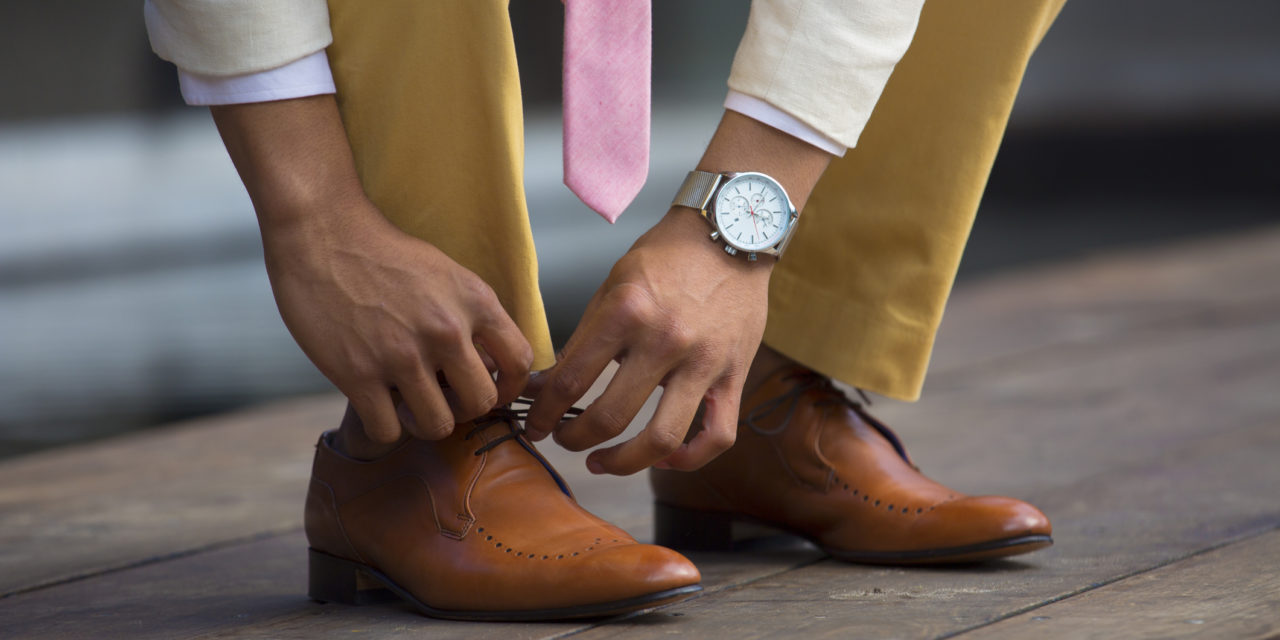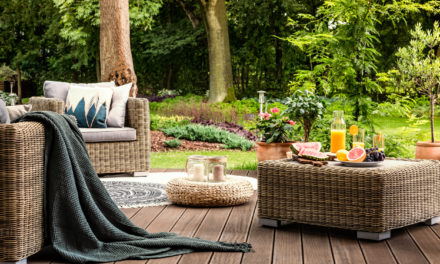Stop hiding your shoes. Instead, display your collection — at least the core six or eight pairs — on shelves at eye level, where you can easily see them. If clutter bells are ringing, ignore them. The secret to shoe storage is staying on top of your inventory.
Here are seven tips to save yourself from drowning in shoes:
1. Make the most of your garage.
Simonsen recommends designating a landing area for athletic and seasonal shoes near your sports equipment so they’re “easy to grab and go.” Baskets are handy for families that need extra compartmentalizing.
2. Keep your entryway tidy with a storage bench or stylish shoe cabinet.
Shoe cabinets are particularly handy for those who don’t allow shoes in the house. Most pieces double as a console table or bench.
Products: Calvin shoe cabinet ($189.99) or Coolidge shoe cabinet ($153.99), both from target.com; Margaret modern and contemporary shoe bench ($81.19, home depot.com); Prepac Monterey shoe storage cubby ($129.99, homedepot.com) or Prepac horizontal shoe cubby bench ($239.99, target.com).
3. Protect special or collectible shoes in clear plastic boxes.
Serious shoe lovers who want to store and maintain their footwear should have stackable shoe boxes, which are sold in transparent plastic for easy visibility. “We sell wipes, cleaners, even charcoal bags to prevent odors,” Seifert adds. “It’s a passion.”
4. Try a trundle-style storage rack.
If the rest of your bedroom is at capacity, create your own makeshift storage bed with an under-bed shoe rack. Bonus points if it’s on wheels.
Products: Rebrilliant rolling under-bed shoe rack ($23.99, wayfair.com); tweed 16-pair under-bed shoe organizer ($19.99, containerstore.com).
5. Display everyday shoes on a bookcase, floating shelves or vanity.
Fashion blogs are full of fun ideas, but it’s hard to beat the elegance of a simple vertical bookcase, a cheap alternative to built-ins. Place shoes you don’t want to see, such as flip flops and workout shoes, on a shelf inside your closet.
6. Upgrade your over-the-door shoe rack.
They may be polarizing, but you can’t deny that over-the-door shoe racks do wonders with vertical space. Use a grown-up option that doesn’t feel pulled from a college dorm.
Product: Gunmetal over-the-door shoe rack ($39.99, containerstore.com).
7. Keep kids’ shoes at eye-level.
Simonsen shares three words for effective children’s shoe storage: “Make it easy.” Think low, compartmentalized storage bins or units with benches so they can sit while they take their shoes on and off.
Product: Trofast storage combination ($66.99, ikea.com).
“This is not about showing off. This is not about more-more-more. This is about less,” says designer Lisa Adams, who started LA Closet Design in 2007. As one of Hollywood’s go-to wardrobe gurus, she creates dream closets for celebrities such as Reese Witherspoon, Tyra Banks and Khloe Kardashian. “Shopping is impulsive. The best way to keep yourself from overspending and stockpiling crap is to make sure you can see what you already have.”
First gather all the shoes you own in one place. This includes snow boots in the car trunk, the heels in storage for weddings and funerals, and the sneakers you’ve been meaning to clean. Then divide them into two piles: shoes you’ve worn in the past year and shoes you haven’t. Everything in the latter pile should go. “It feels extreme,” Adams says, “but it’s effective.”
When Adams renovated her closet two years ago, she said, she was shocked to see how many clothing items she’d accumulated that she wasn’t using, particularly pieces with stains or tears that she’d put off having repaired. Now she gives herself two weeks to fix a piece, or it has to go.
“We’re so robotic in that we grab things from our closet, realize there’s an issue, and then we put it back,” she says. “Don’t put it back.”
Once you’ve determined which shoes you actually wear, note how frequently you wear them. Shoes worn daily or weekly should get prominent storage in the center of your closet system or entryway where they’re easy to put on and stow away. Seasonal and activity-specific shoes, such as hiking boots and formal footwear, can be stored in a garage, attic or back-closet shelf. This is where plastic or color-coded shoe bins and boxes come in handy. Although it’s less important for storage solutions to match the closet, retailers are catering to younger customers who want total coordination and control.
Jimmy Seifert, a closet department buyer for the Container Store, says wardrobe systems are becoming less of an afterthought or careless catchall. “Younger customers … in particular, want a polished, edited look,” he says. “Matching hangers, shoes on display, handbags on shelves. It’s sort of extreme minimalism, or extreme decluttering. Everything out in the open so you know exactly what you’re working with.”
To attract material-minded millennials, retailers are expanding their closet offerings to include store-inspired display cases and high-tech storage boxes. The Container Store sells plastic, drop-front containers for collectible sneakers and a box specifically sized to fit upright high heels. In April, Ikea teamed with Los Angeles streetwear designer Chris Stamp on a line of limited-edition plastic shoe boxes called Spänst. They’re a sneakerhead’s dream, monochromatic and stylishly simple, designed to look like little shipping containers with built-in showcase lights.
“We’re tuned in to what this generation wants,” says Janice Simonsen, a design spokeswoman for Ikea North America, “which is to feel proud of their shoes without going too loud or bulky.”
For her custom closets, Adams draws inspiration from high-end boutiques and dressing rooms where elegant lighting and a tidy aesthetic instantly put shoppers at ease. “It’s relaxing, but more importantly, it makes you want to wear what’s on the rack,” she says. “Why wouldn’t that also work at home?” Some of her favorite closet-design techniques, such as LED-lit shoe walls and jewelry display cases, elevate the homeowner’s collection and make them excited to wear it.
“I know it sounds over-the-top, but it’s rooted in practicality, in using what you already have,” she says. “Buying shoes and then tossing them into a bin to be forgotten, that feels crazy to me.”
How you store and display your shoes comes down to how much space you have. People with walk-in closets or a garage for seasonal storage have more options than those in a city apartment. But thoughtful, creative organization can make even the smallest closet feel surprisingly powerful. Which is to say: It isn’t how big the closet is; it’s how you use it.

 Photo Credit: brazzo (iStock)
Photo Credit: brazzo (iStock) 



Comment on: 7 Tips to Declutter Your Shoe Inventory